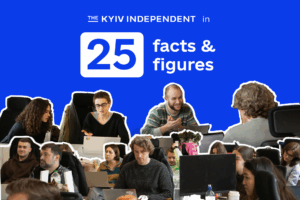
Is the collapse of First Brands Group an “Enron moment” for the private credit market?
The analogy is overused to the point of cliché when it comes to financial fiascos. But in the case of First Brands — whose $12bn bankruptcy is rattling some of the world’s biggest non-bank lenders — there’s something to it.
As with the Houston energy trader whose collapse heralded the onset of the 2001 stock market crash, First Brands made substantial use of opaque off-balance sheet “special-purpose entities”. While Enron’s rise and subsequent collapse was fuelled by a boom and bust in equity markets, Ohio-based auto parts company First Brands is a creature of the ongoing mania for private credit.
At the same time that some of the biggest names on Wall Street are facing the prospect of multibillion-dollar losses from the company’s chaotic bankruptcy, bankers are readying capital markets for some of the biggest leveraged-buyouts in history. The music is still playing.
Given this state of affairs, FTAV thought it was worth giving Jim Chanos a call. The legendary short seller probably needs no introduction to the Alphaville audience, but for our younger readers: Jim cemented his reputation for spotting large scale corporate fraud by betting against Enron ahead of its collapse.
Before we get going, a necessary disclaimer: First Brands has not been accused of fraud. However, a bankruptcy probe into its byzantine off-balance sheet financing is examining whether the company pledged the same invoices multiple times. First Brands did not respond to a request for comment on the similarities between its financing structures and those of Enron.
Jim had some sharp words about the “magical machine” fuelling Wall Street’s debt boom and the “bizarre” things that can happen when investors stop doing the work. The interview transcript has been lightly edited for clarity and brevity.
Thanks for your time, Jim.
My pleasure.
I don’t know how much of the FT’s reporting on the First Brands situation you’ve read, but it’s a $12bn capital structure across on balance sheet and off balance sheet debt, some of the biggest names on Wall Street have lost hundreds of millions of dollars and it’s all to do with off-balance sheet SPEs, people not doing the work and irrational exuberance in private credit markets. As a journalist I try not to editorialise too much, but given that state of affairs it does not seem to be hyperbolic to ask if this is private credit’s Enron moment? So, I thought I should give you a call.
At the end of cycles everybody’s guard is let down, right? The sense of healthy disbelief erodes, due to fear of missing out.
The course I teach on fraud: it’s a historical narrative and the fraud cycle follows the financial cycle with a lag. The longer the cycle goes on the more investors’ sense of healthy scepticism erodes and they begin to believe things that are too good to be true and/ or they don’t do the work. That’s the ultimate fertile field for financial fraud.
People are inundated with capital and they have to put it to work and things ensue. It’s as old as financial markets.
It’s not for nothing that the biggest frauds in the Enron cycle were not technically tech companies — Enron and Tyco and WorldCom — but that wave of fraud was due to the fact we had a 10-year bull market and people began to believe things that were too good to be true.
I called this ‘golden age of fraud’ a few years ago and, of course, it’s done nothing but gallop even higher.
It’s so funny because as a professional investor I know all too well that people believe things that are too good to be true. Or they don’t look. It’s not until you start losing money that the portfolio manager tells the analyst ‘hey, put that file on my desk, I want make sure I understand what we own’. Again, that’s old as financial markets.
I suspect we’re going to see more of these things, like First Brands and others, when the cycle ultimately reverses.
I think that’s an astute observation on Tyco and Enron, because in this instance you have something that makes spark plugs and windscreen wipers, but it was essentially a giant finance company. Not everyone realised that.
Again, as long as everything works nobody asks questions. It isn’t until something stumbles, or the markets stumble, that people say ‘wait a minute what are we doing here, this doesn’t make any sense?’.
We’re going to see to more of it, particularly as private credit has put another layer between the actual lenders and the borrowers.
That’s what made the subprime crisis so bad, we just had so many layers of people in between the source of the money and the use of the money. It was the so-called hot potato. The best term I heard was ‘we’re in the moving business, not the storage business’ as it related to credit back then. Now with the advent of private credit, institutions are putting money into this magical machine that gives you equity rates of return for senior debt exposure, which again should be the first red flag. We rarely get to see how the sausage is made.
As I said, the FT was early on this story and I have a lot of sources in the receivables finance world. One of my first calls in August was with someone who said: ‘Rob, this company has factored investment-grade receivables at double-digit yields’. Anyone looking at that should have asked why.
Right. And then there’s the added layers of fees. Not only is there this alchemy of turning supposedly investment-grade stuff into equity rates of return, but everyone is taking 1-in-15 or 1-in-20 from each layer of the pie. The only way you can get there is if you’re playing some sort of bizarre game or using just insane amounts of leverage, to take a 7 per cent credit and borrow at 5 per cent and turn it into a 20 per cent return. It’s the only way it works.
The other issue with private credit, and quasi-public credit in CLOs, is that the financials are all private. We’re losing that window that allows sceptical analysis due to that shift away from public markets. On that topic, with Enron — it’s been a while since I’ve read Bethany McLean and Peter Elkind’s book — so remind me, how did the SPE games get on your radar screen?
It was the simply the disclosures, through the 1999 10-K and then the 10-Qs that came out subsequent to our involvement in late 2000. There were these were at first opaque — and then they increased in level of disclosure — entities in which the general partner was a senior Enron executive. I’m paraphrasing here as I’m forgetting the exact language. And as someone who was running partnerships at the time there were alarm bells going off in my head, because how could you be a fiduciary to both entities?
We now know they were referring to Andy Fastow, the CFO, so how could you be a CFO with a fiduciary responsibility to Enron and the general partner of a partnership where you have a fiduciary responsibility to your limited partners and you’re doing deals with both entities? You literally cannot do that. That was the tip off.
Right. And that’s where it ties back to First Brands. First Brands filed for bankruptcy on Sunday, but earlier last week the SPEs filed for bankruptcy. And the LLC membership chain got disclosed on both sides and it’s the same on both. The equity owner of the structure is the same.
That’s a huge red flag.
·And that’s the point, you had the 10-Ks and 10-Qs to pore over, but if you weren’t a CLO manager or at a private credit fund you didn’t have that.
The opaqueness is part of the process. That’s a feature not a bug, as they say.
We’ve had so much time without significant credit losses in markets. Even when there have been blips, most borrowers have been able to “amend and pretend”. With First Brands, the first-lien debt was trading close to par when we wrote our first story. It traded at 33 cents just prior to bankruptcy. There’s blood on the street now.
Right. As I said earlier, it’s a recurring theme in the class I teach. I can send you the syllabus, you might get a kick out of it! It’s as old as financial markets.
Thanks so much for your time, Jim, it was a real pleasure talking to you.
The pleasure is all mine.
Chanos may no longer run billions of dollars of capital, but he remains an astute observer of financial markets. Other perspectives from titans of the OPM brigade are available, however.
We’ll leave the last word to Blackstone founder Steve Schwarzman, whose lieutenants have recently pioneered the exciting new field of earning double-digit interest on loans against investment-grade counterparties to Nvidia chip arbitrageurs.
The chair of the $1tn-in-asserts private capital firm, whose CLOs have booked significant losses dumping their First Brands exposure, made the following remark to a Parisian investment conference back in the halcyon days of 2023:
“If you can earn 12 per cent, maybe 13 per cent on a really good day in senior secured bank debt, what else do you want to do in life?,” Schwarzman told the conference. “If you are living in a no-growth economy and somebody can give you 12, 13 per cent with almost no prospect of loss, that’s about the best thing you can do.”





